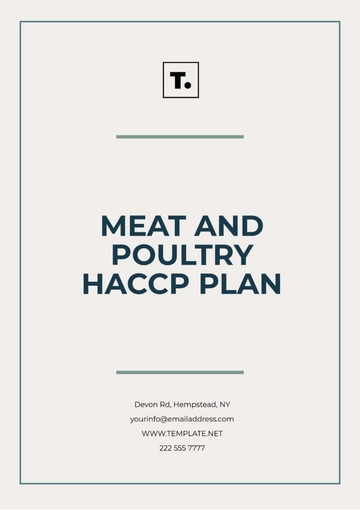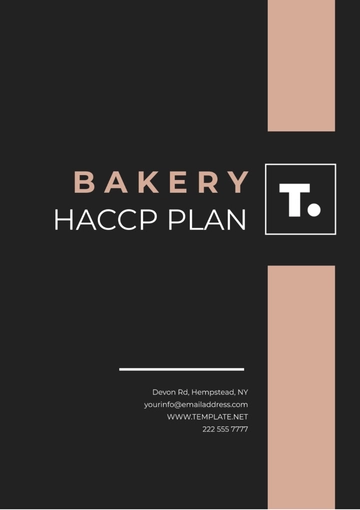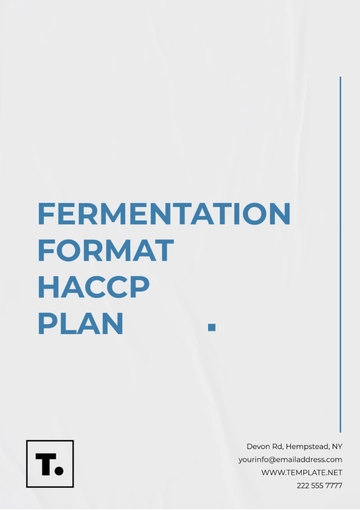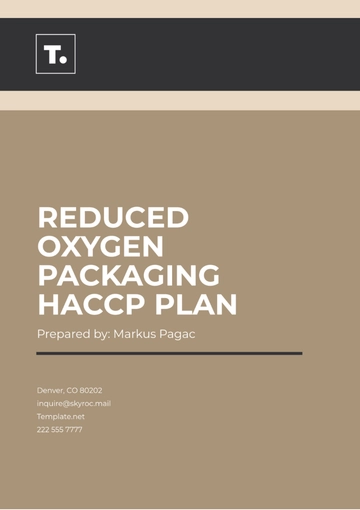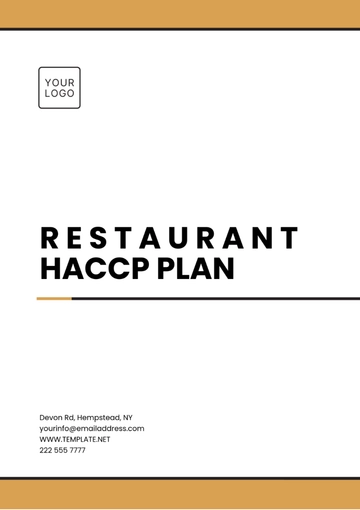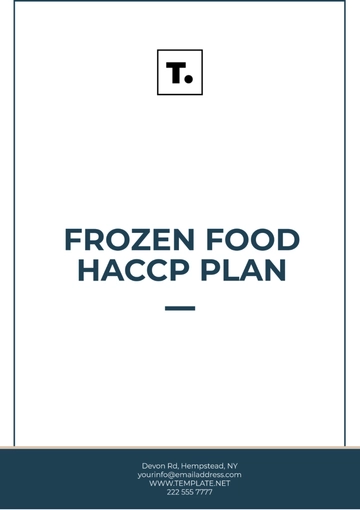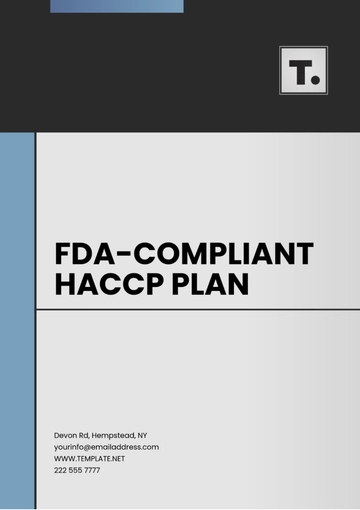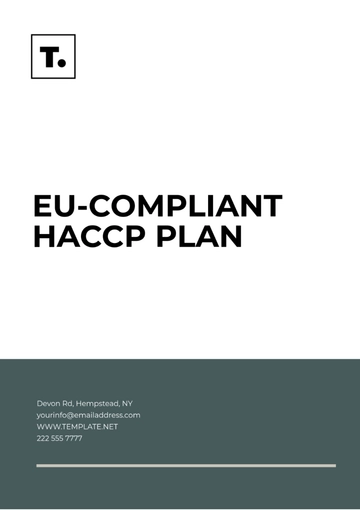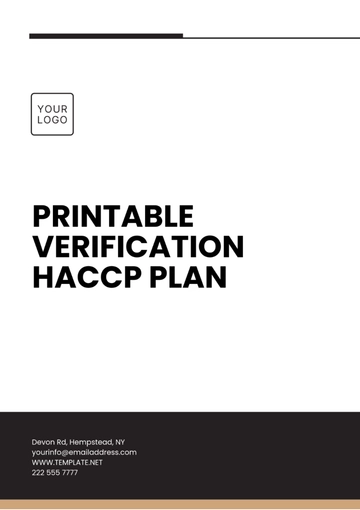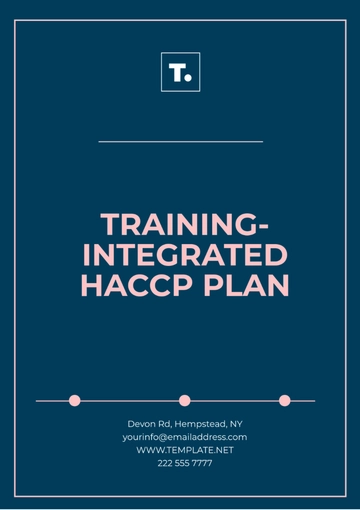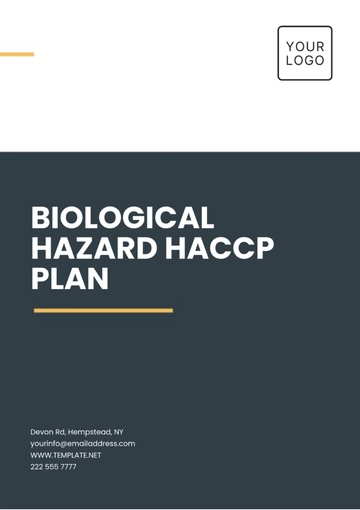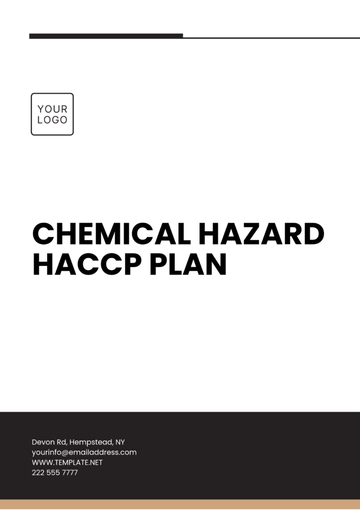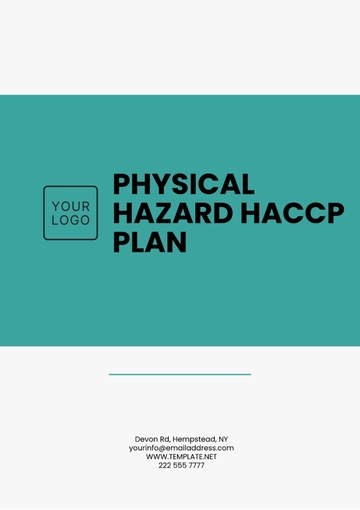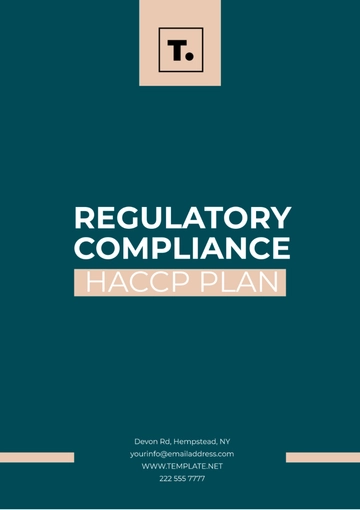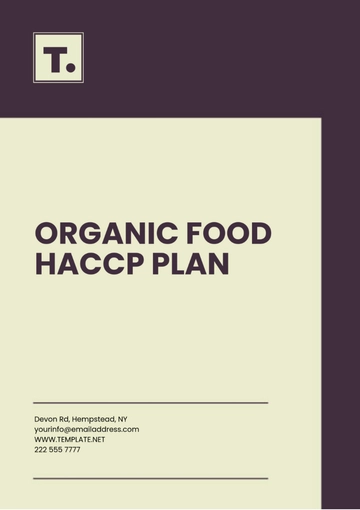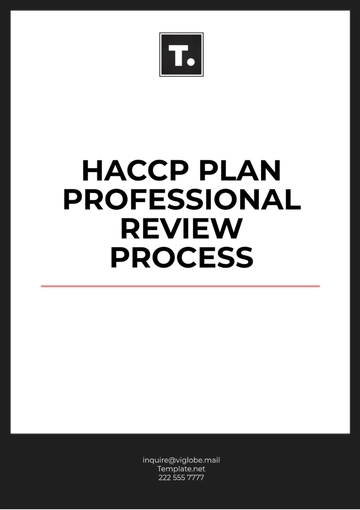Dairy HACCP Plan
I. Introduction
This Dairy HACCP Plan is designed to ensure the safety and quality of dairy products produced at [Your Company Name]. By implementing the Hazard Analysis Critical Control Point (HACCP) principles, we aim to identify, evaluate, and control food safety hazards throughout our production process. This plan serves as a proactive approach to food safety, aiming to protect consumers and maintain regulatory compliance.
II. Scope
This Hazard Analysis and Critical Control Points (HACCP) Plan encompasses the procedures and methodologies involved in the production processes of the following dairy products:
Milk: Pasteurized liquid milk for consumption.
Cheese: Various cheese types, including hard, soft, and processed.
Yogurt: Fermented dairy products with added flavors.
Ice Cream: Frozen dairy desserts with various flavors and ingredients.
III. HACCP Team
The HACCP Team is responsible for developing, implementing, and maintaining this plan. The team includes:
IV. Product Description
1. Product Name: Sunny Dairy Whole Milk
2. Ingredients: Pasteurized whole milk, vitamin D3.
3. Shelf Life: 14 days from the date of pasteurization.
4. Storage Conditions: Keep refrigerated at ≤ 4°C (39°F).
V. Flow Diagram
Production Process Flow:
Raw Milk Reception: Receipt of raw milk from approved suppliers, ensuring all deliveries are documented and inspected.
Milk Pasteurization: Thoroughly heating milk to at least 72 degrees Celsius for a minimum of 15 seconds effectively kills any harmful pathogens present.
Product Formulation: Mixing ingredients for cheese, yogurt, and ice cream, ensuring accurate measurements.
Packaging: Products are sealed in specially designed and sterile containers to keep them fresh and ensure they are safe for consumption or use.
Storage/Distribution: Storing finished products under controlled conditions for distribution, ensuring proper rotation based on FIFO (First In, First Out).
VI. Hazard Analysis
Step | Potential Hazards | Severity | Likelihood | Risk Level |
|---|
Raw Milk Reception | Biological (pathogens) | High | Medium | High |
Milk Pasteurization | Biological (pathogens) | High | Low | Medium |
Product Formulation | Chemical (allergens) | Medium | Medium | Medium |
Packaging | Physical (foreign objects) | Medium | Low | Low |
Storage/Distribution | Biological (spoilage) | High | Medium | High |
VII. Critical Control Points (CCPs)
CCP No. | Step | CCP | Critical Limit | Monitoring Procedure |
|---|
1 | Raw Milk Reception | Microbial Contamination | Temperature ≤ 4°C | Check the temperature of raw milk upon receipt. Record results. |
2 | Milk Pasteurization | Pathogen Reduction | Minimum 72°C for 15 seconds | Continuous temperature monitoring; verify via charts and logs. |
3 | Product Formulation | Allergen Control | Avoid cross-contact | Implement visual inspections and staff training to ensure allergen segregation. |
4 | Packaging | Foreign Objects | No foreign objects present | Conduct visual inspections at the packaging line to detect contaminants. |
5 | Storage/Distribution | Spoilage | Maintain ≤ 4°C for refrigerated products | Check and record storage temperatures daily. |
VIII. Monitoring Procedures
Procedures for monitoring will be put into practice to guarantee compliance with essential boundaries.
IX. Corrective Actions
X. Record Keeping
Maintaining accurate and well-organized records is essential for ensuring compliance with regulations and facilitating traceability in operations.
Plan Templates @ Template.net




